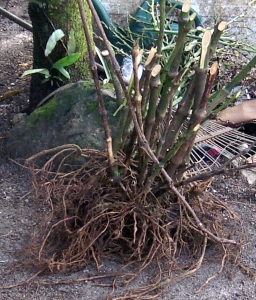
Note that this page includes photos from other terms. Fall 2005 was marked by the absence of Oaun and by a thunderstorm replete with lightning and torrential rain. The lighting conditions were not conducive to taking many pictures. The majority of the images on this page come from prior terms. This term also featured a handout.
Piper methysticum (sakau). Note that the highest concentration of kavalactones is in the smaller roots that branch off of the main core root stump.

A stone on which sakau is pounded. Called a peitehl (bay-jel) here on Pohnpei. Some stones are for "everyday" use, others may be reserved for use only when chiefs are present. The stones can be very old, passed down from generation to generation.
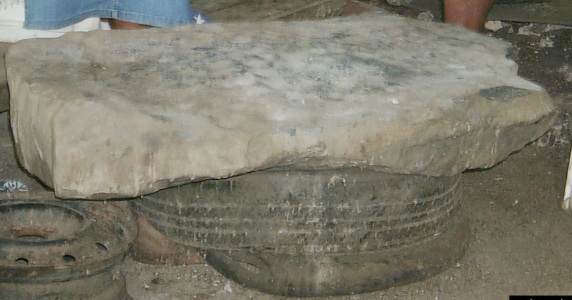
Pounding the sakau.
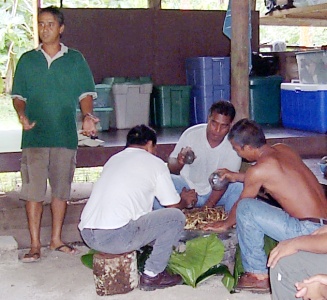
Part way through pounding the sakau is gathered between the hands, "scuffed" on the peitehl, and then flipped. This is called keidihd.
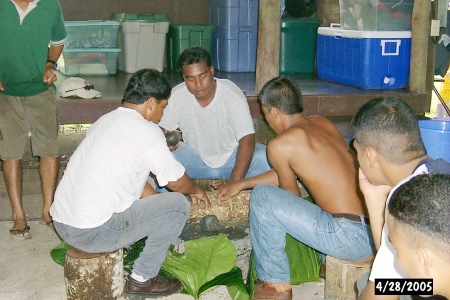
While the sakau root is being pounded, others will prepare the hibiscus (kohlo) wrap for squeezing. The wrap is made of the inner bark of Hibiscus tiliaceus. The inner bark contains polysaccharides, long chain sugar molecules. The result is a thick, slimy, drink with the consistency of mucous. The outer and inner bark are peeled away at an angle of 180°.
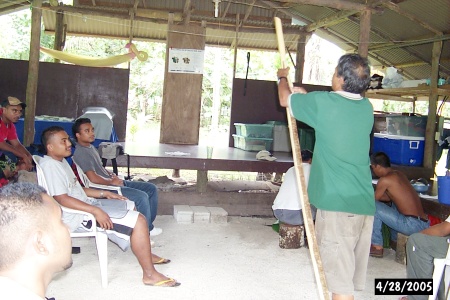
Then the inner bark is separated from the outer bark.
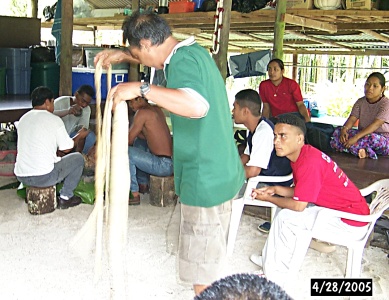
When the sakau root is completely pounded, the caller will declare "Mut!" (mootch) to indicate the root is pounded. Then the pounders can, should they choose, call the hibiscus wrap to the stone by ringing the stone with their pounders. This is referred to as sokama or tehmpehl (tchem-pell).
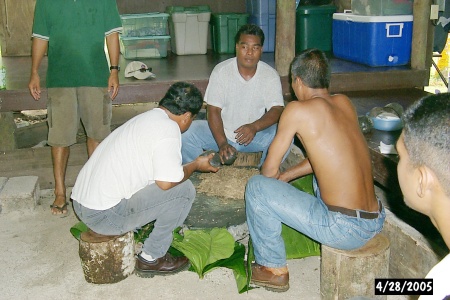
Preparing the sakau for squeezing (wengiweng). First the sakau is laid down in the hibiscus wrap.
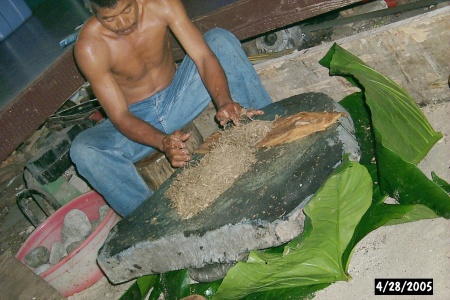
The squeezer first works the sakau prior to squeezing into a cup.
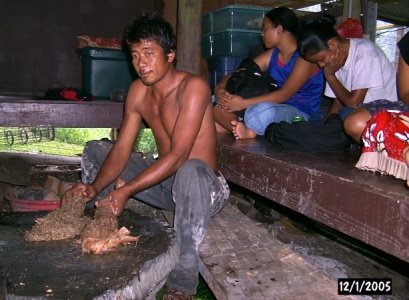
The first squeeze.
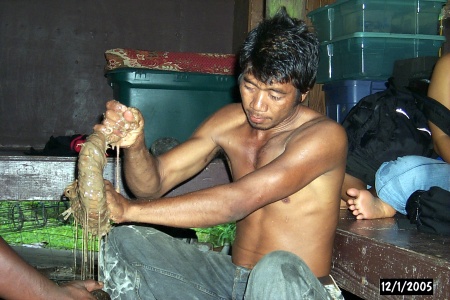
The second squeeze - the reverse twist.
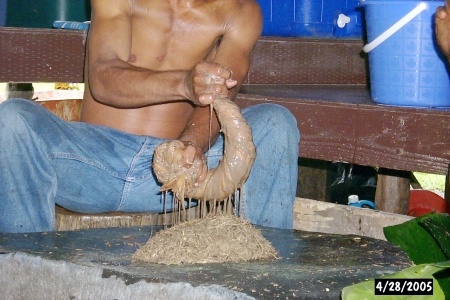
A four stone layout inside the nahs (traditional Pohnpeian ceremonial house) can be seen in this image from 2004. Note the error: a student placed a backpack on the peitehl. This was removed. Nothing should be placed on the peitehl other than sakau and kohlo (the hibiscus wrap). These days the stone can be covered or placed on end between uses. The front left stone is reserved for use when the Nahnmwarki is present.
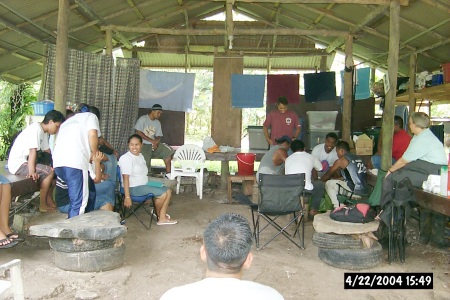
The stones are usually placed on end when not in use.
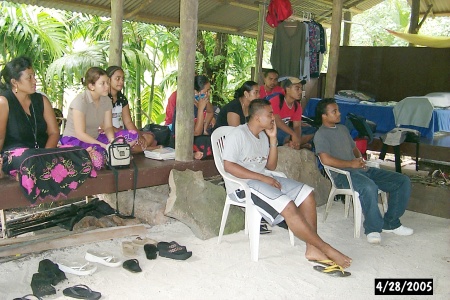
The sakau has the higher title in nahs, thus a person is called to the cup. The cup does not come to you, you go to the cup. Photo from spring 2005 ceremony when lighting was better.
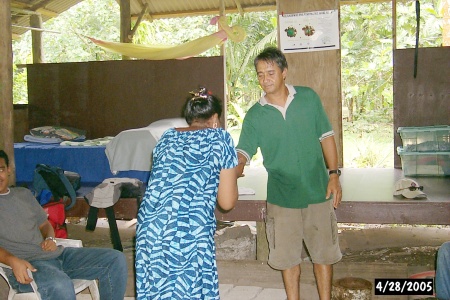
Pictures of the class at the cultural ceremony fall 2005.
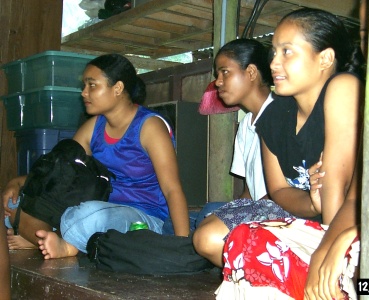
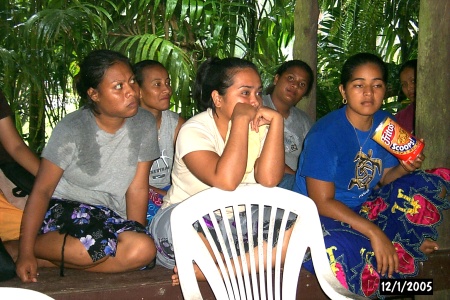
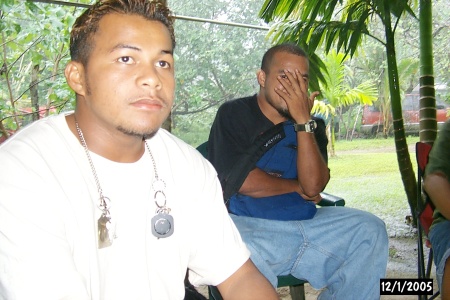
Ethnobotany • Courses • COMFSM